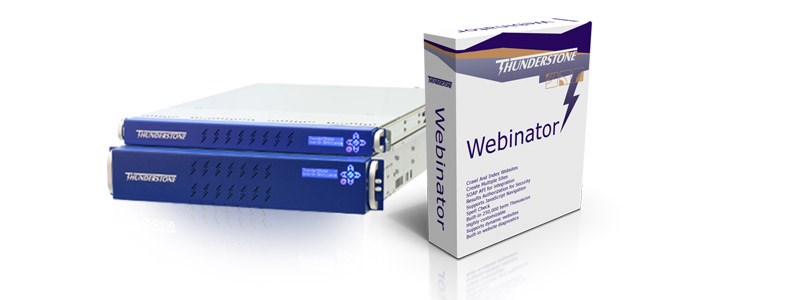Most Americans know QVC by its shopping channel on television. QVC's web site, however, also is one of the most successful online retailers, bringing in a substantial portion of QVC's $4.4 billion of sales yearly.
Thunderstone's Texis software plays an important role at QVC in a variety of ways.
Unlike television sales, where each item is on sale for only a few minutes at a time, QVC's entire inventory is available all the time on its web site. The online database thus has hundreds of thousands of products, and requires a robust search engine to help users find the items that satisfy them.
QVC needed its search engine to do more than simply search, however. The company had many advanced requirements.
For example, its customers are price sensitive, so QVC wanted to enable them to select by price as well as by description. A user can enter "gold necklace" and "$100", and QVC's Texis system automatically finds products within +/- 25% of the user-entered price. QVC found Texis the best product for combining a numeric range query with a text search.
Texis's real-time functionality also is crucial to QVC.
We update our inventory in realtime to make sure sold-out products are not offered to the customer. This is especially important In high volume periods like 'Fashion Day' where certain colors and sizes sell out quickly and frequently. This is a key function Texis provides that no other search engine we've seen can do.
Frendy Glasser, QVC Director of Data Administration
In addition to serving search results, Texis powers the "drill-down" or catalog browsing features, which are based on product metadata. And when a user views the detailed description associated with an individual item, Texis serves up that content too.
Many other Texis features are in use. Products are ranked according to QVC's proprietary criteria. And results are retrieved from "partner" databases for products such as books, music, and sporting goods.
The Texis applications are used as well by QVC's order-entry representatives when customers call asking for a product. All in all, the Texis installation at QVC is handling millions of database queries daily. QVC runs Texis on IBM AIX hardware, with the "front end" user interface written in ASP running on Microsoft NT servers.
What's also important to us, besides the performance and advanced features, is the flexibility to change how we respond to queries as the business situation evolves. We like knowing that Texis can be programmed to respond to searches according to almost any logic we come up with. Before Texis, we had another search package that was a major product in the industry, but we were frustrated by programmability limitations, and by its proprietary interface. Texis, in additional to being a great search product, is easily customizable due to its industry-standard database features.
We also value Texis's consistency in response time regardless of volume, its scalability, and its availability. We rarely, and I mean rarely, have any downtime problems with the Thunderstone Texis engine.
Frendy Glasser, QVC Director of Data Administration









